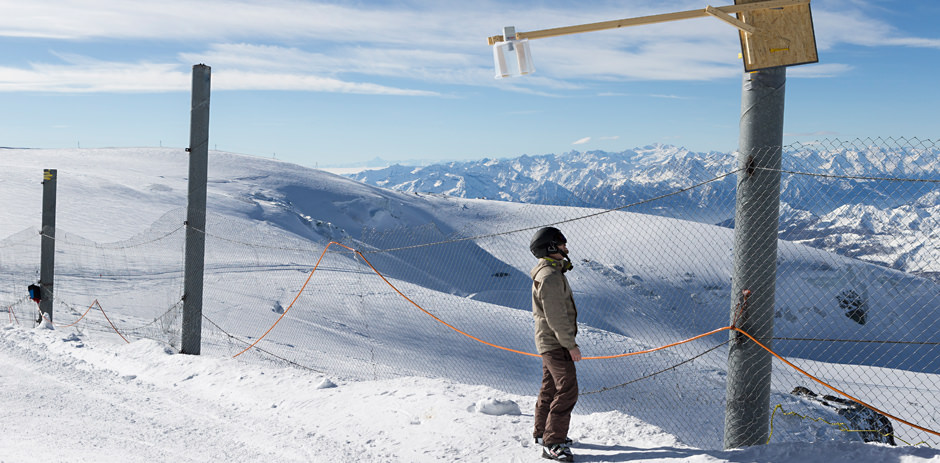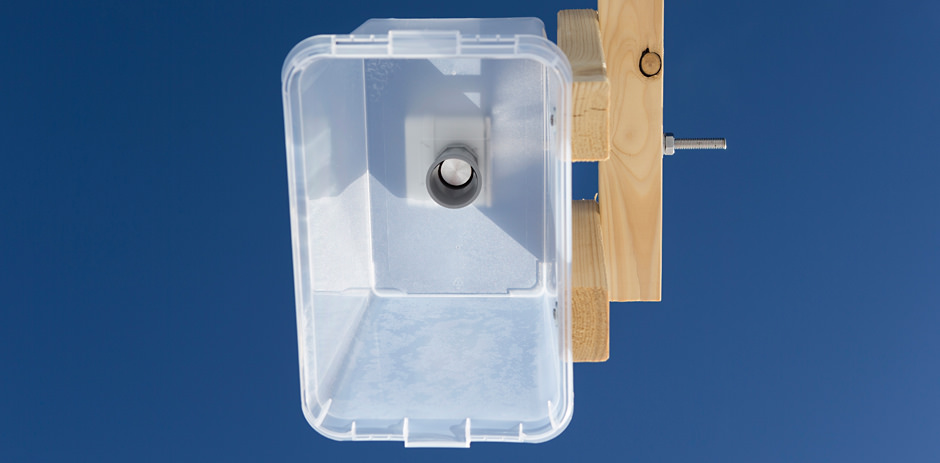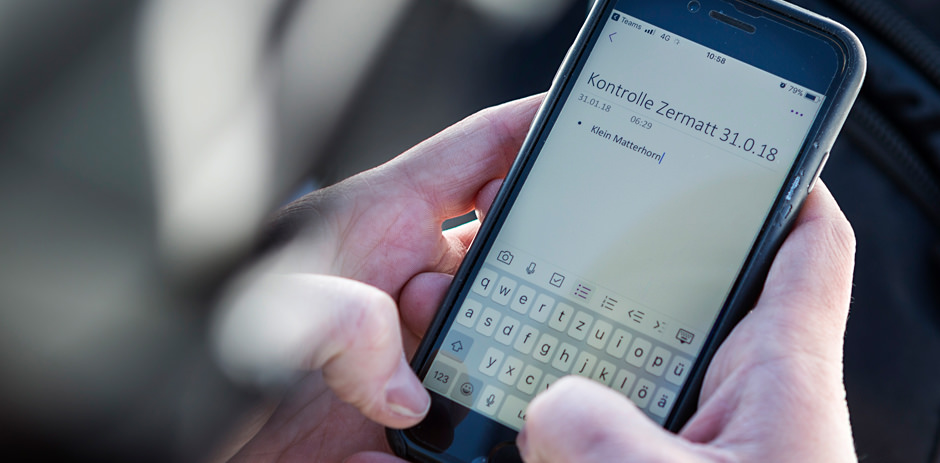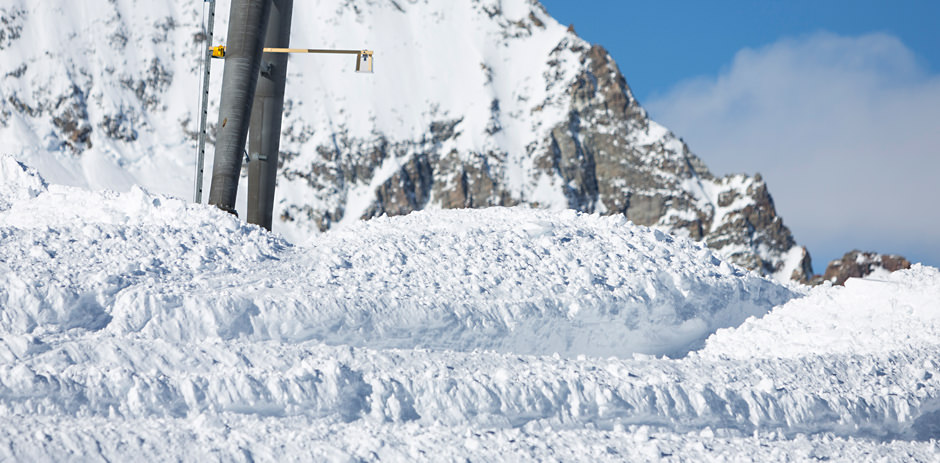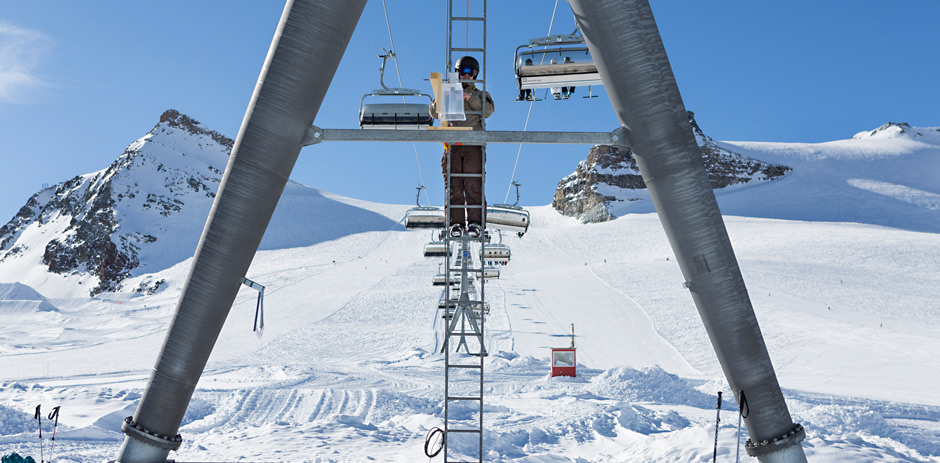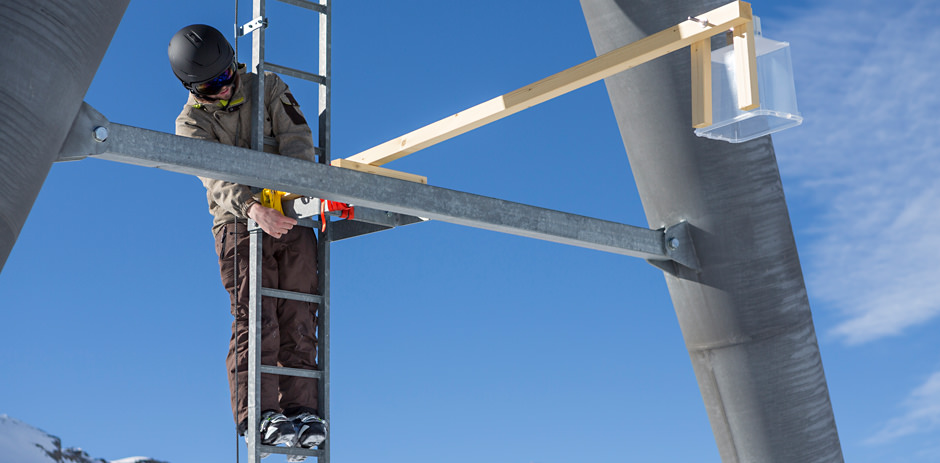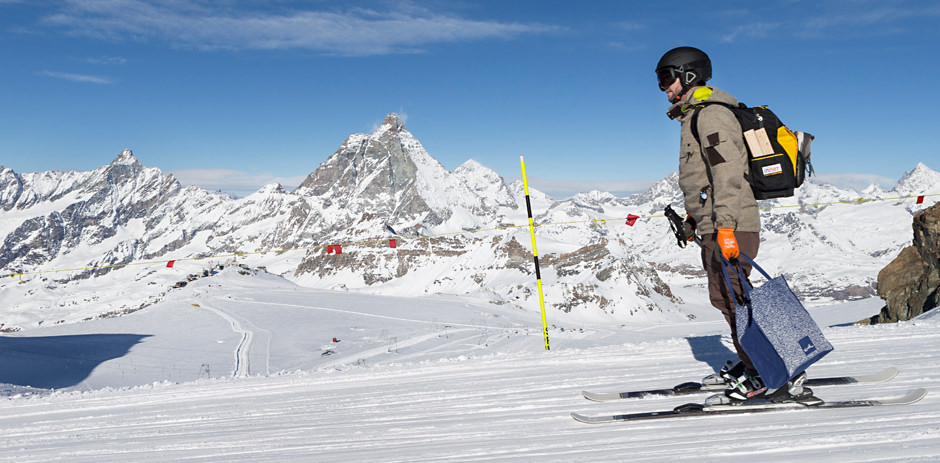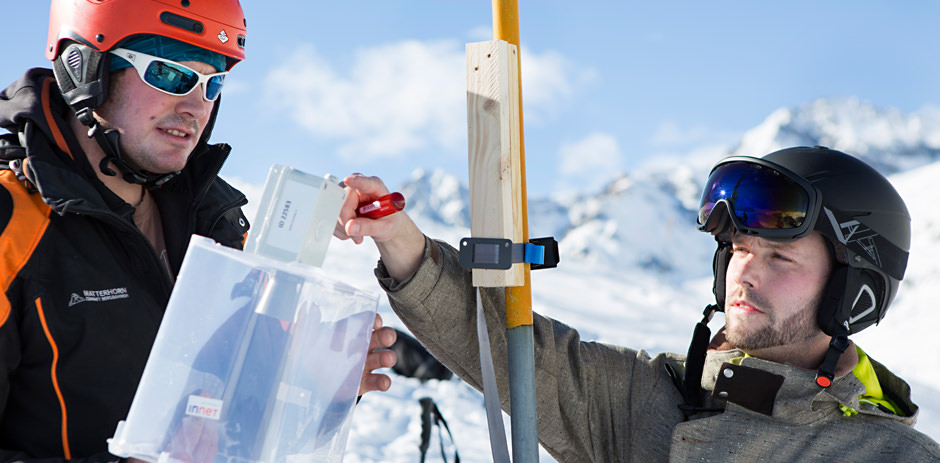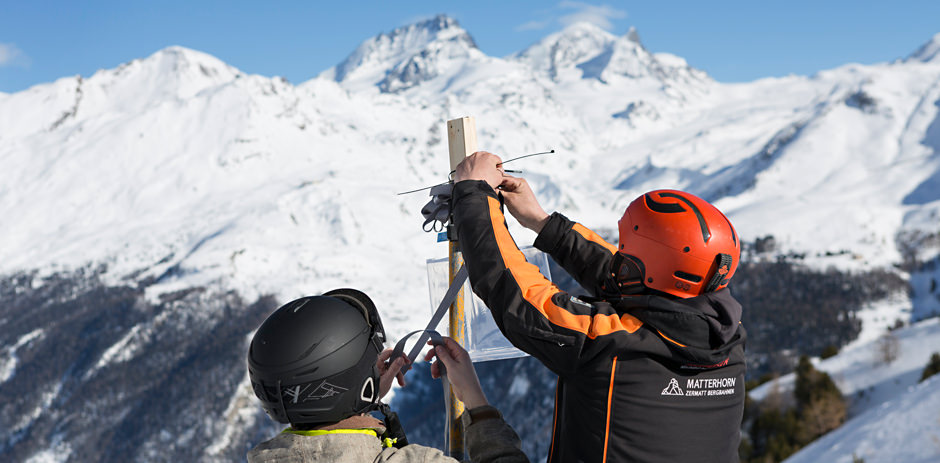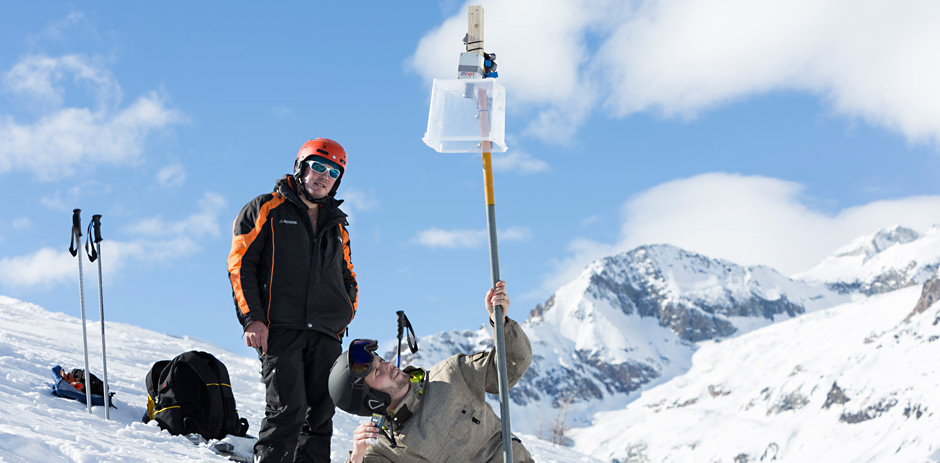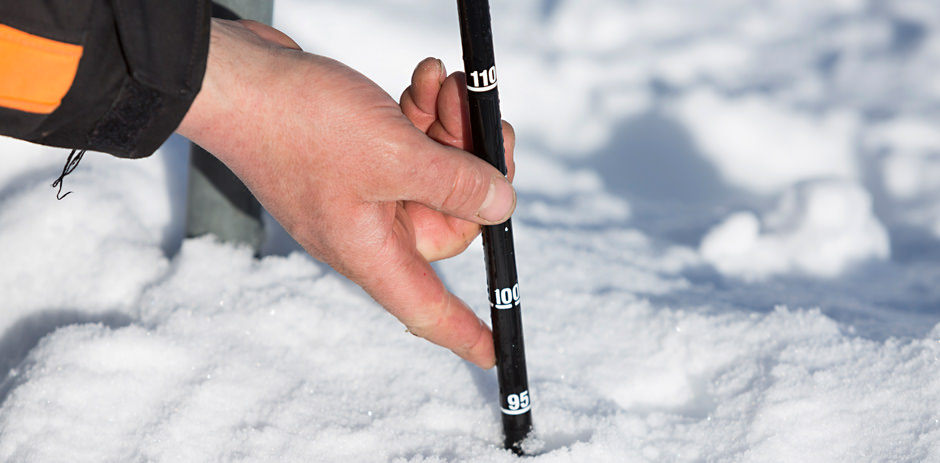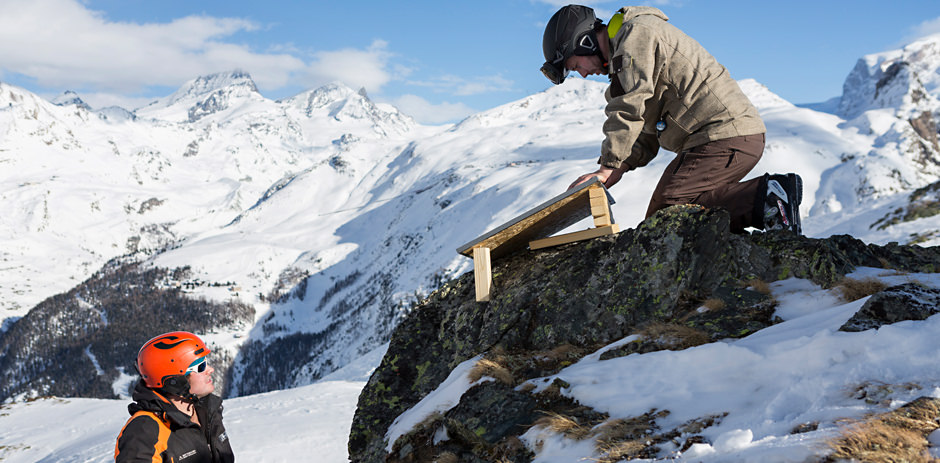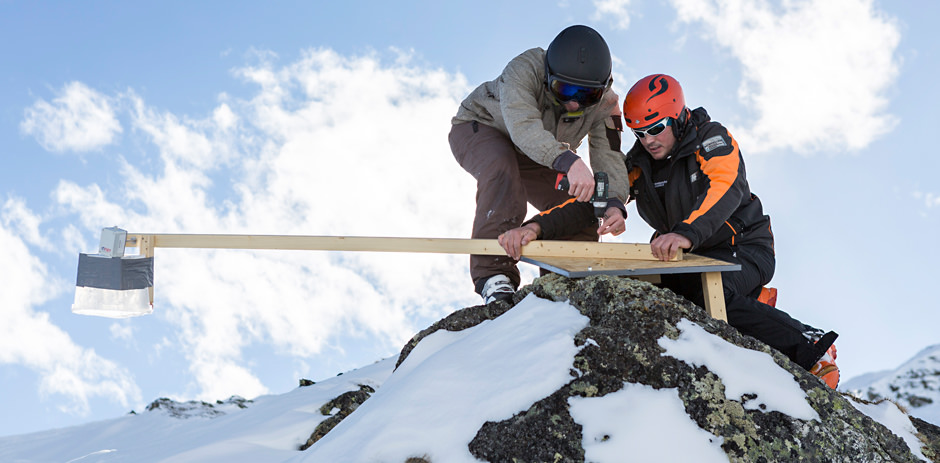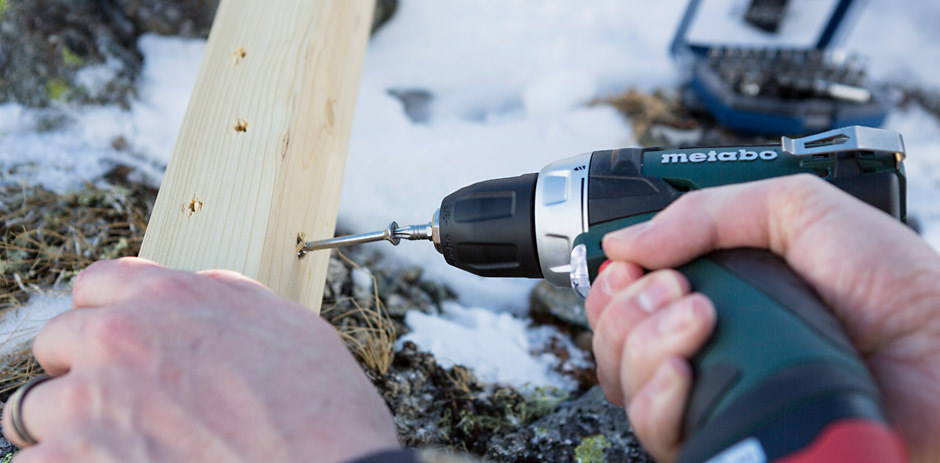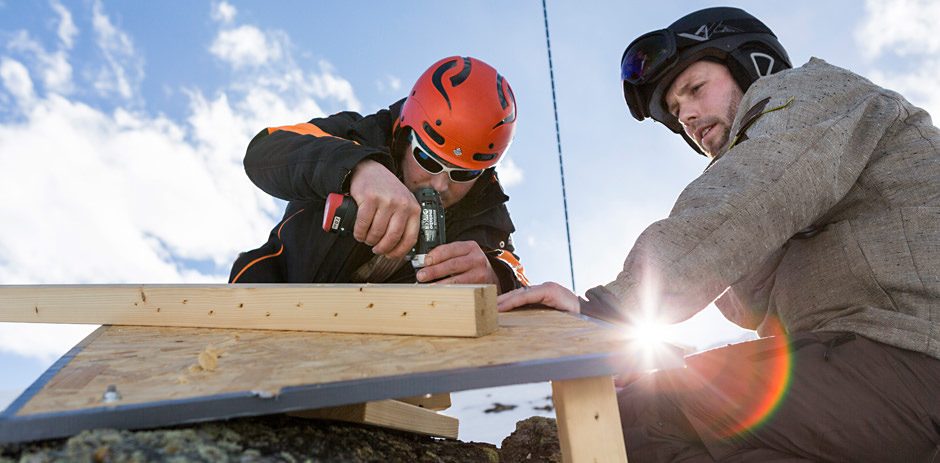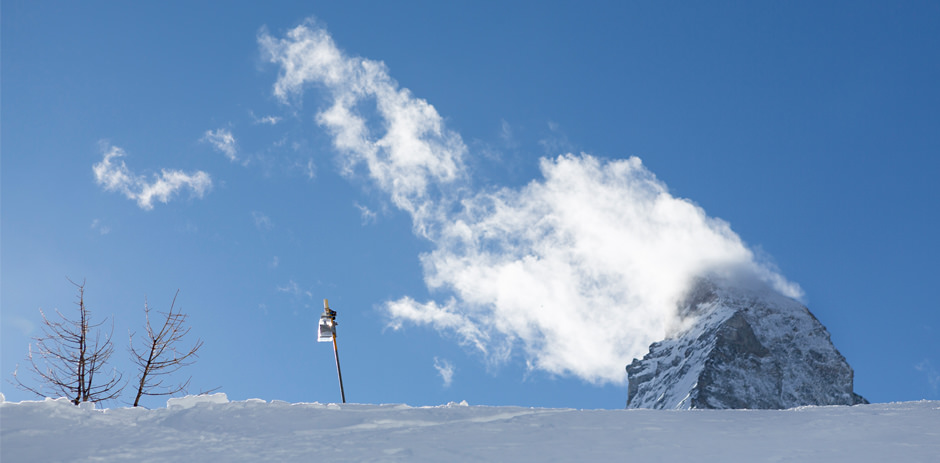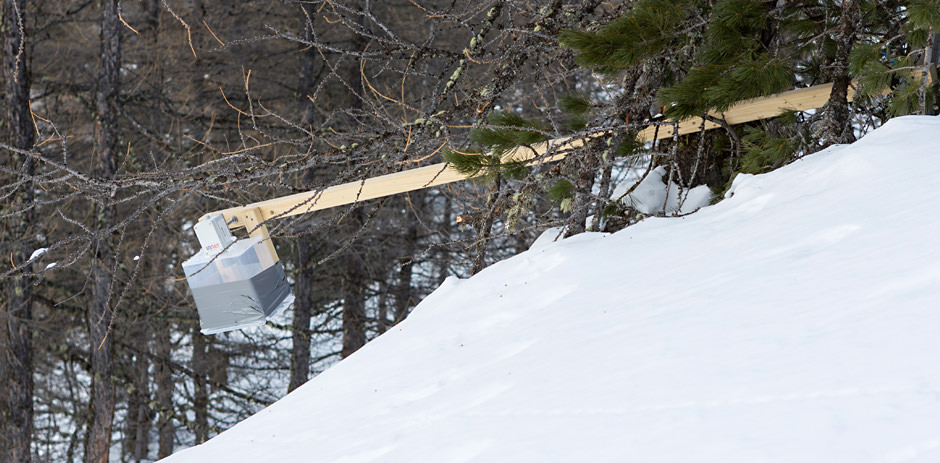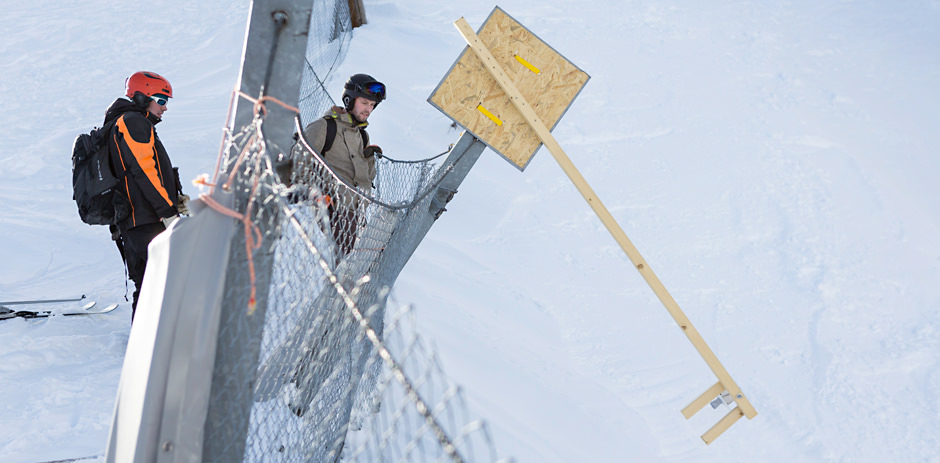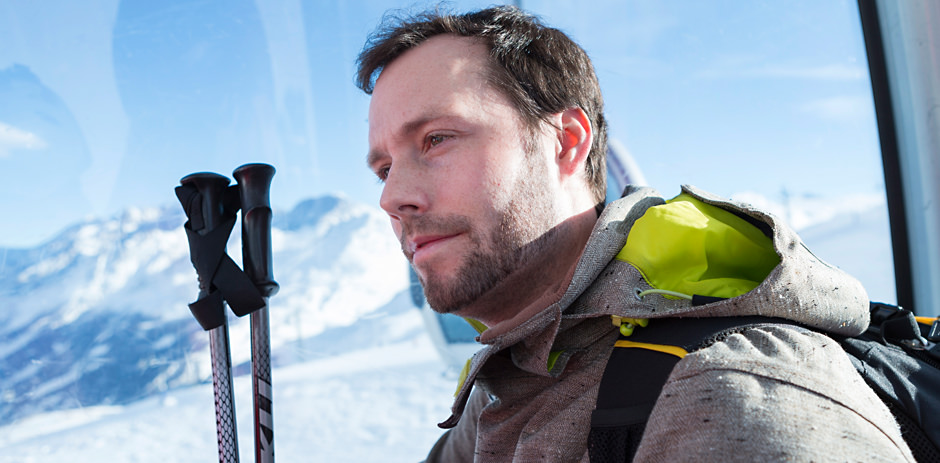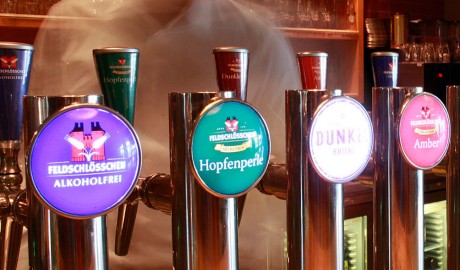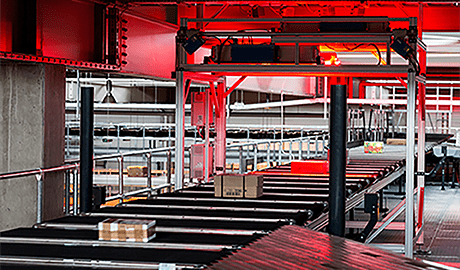Internet of Things
Zermatt and the IoT in extremis
Since December, the ski resort of Zermatt has been getting better at managing precarious slopes. And some of this is thanks to an inquisitive climate researcher from Lucerne and his take on the Internet of Things in the high Alps (with the help of some roof battens!).
Text: Tanja Kammermann, Images
Mario Betschart blinks in the bright afternoon sun. In the background, the Matterhorn looms large against the sky to create an almost kitsch setting. He now looks visibly more relaxed and almost satisfied after the stress of the past few hours. All but two of the cradles for his ultrasound sensors have survived storms Burglind and Evi and masses of snow. 'What about the iron pole then, what's that for,' he asks Jonas Truffer, a mountain rescuer employed by ski lift operator Zermatt Bergbahnen. 'We use it for orientation when we're up in the helicopter, so that might work,' replies Jonas Truffer. Mario Betschart pulls a new ultrasound sensor out of his shopping bag – a rectangular box with a flat, round sensor plate surrounded by a grey funnel inside a transparent plastic box. Within 10 minutes, the two men have fitted the battery-operated sensor and the prototype box to the iron pole using two short roof battens, some cable ties, a clamping set, and adhesive tape.
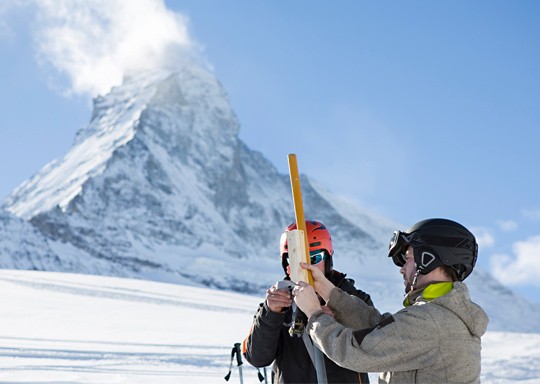
Combining DIY and high-tech: Mario Betschart and Jonas Truffer fit the sensor.
The sensor is already working and sends data every 10 minutes, via Swisscom's Low Power Network, down to the valley and then on to the servers for processing. A few minutes later, the measurement values on current snow depth hit Betschart's mobile phone and confirm it is 1.67 m. I have to confess, the whole thing struck me as having a 'home-made' feel about it to this point. But now I am impressed.
With the new sensor that Mario Betschart has placed 'on board', the ski resort of Zermatt now has a fully operational Internet of Things once more for hazardous snow slopes. All that was needed were a network for data transmission and suitable sensors to provide the data required.
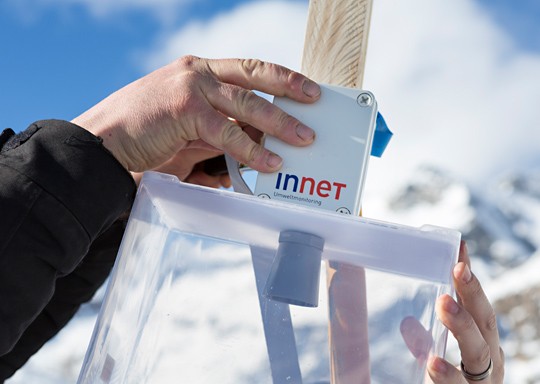
The ultrasound sensor is protected from the elements by a plastic funnel and a plastic box.
The highest of the ten sensors takes measurements on the Klein Matterhorn at an altitude of 3,883 m above sea level, which possibly makes it the world's highest LPN sensor. In any case, Betschart is not aware of any higher ones. In the background, the data is prepared for the ski lift employees and made available on the SnowCast platform.
The 15-minute business idea
It is early in the morning, and I soon spot Mario Betschart as I board the train in Bern. His ski gear and the rucksack for his tools rather give him away. It does not take long before he mentions his rucksack and the ultrasound sensor it contains, although he does seem a bit ashamed of it. Mario Betschart is a qualified climate scientist and has been working for inNET AG for a year. The company has grown thanks to the environmental monitoring work it does for the cantons of central Switzerland. Mario Betschart looks younger than his age and sports some trendy 3-day stubble.
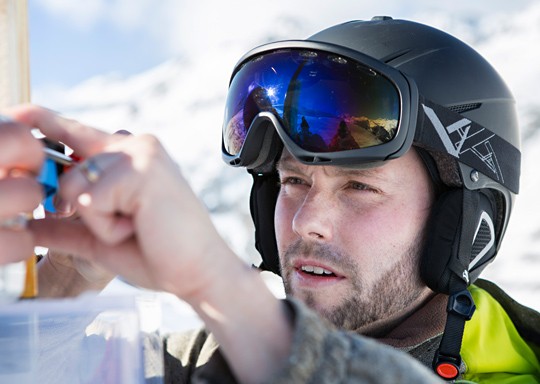
Mario Betschart also needs to show some DIY skills.
He tells me quite casually, and in a way I can understand, about how he intends to develop new lines of business for the company and how inNET has been experimenting with the Low Power Network (LPN) for some time now with this in mind. The advantage with the network is how the radio relay, which transmits on the same frequency as devices for opening garage doors, requires very little energy and has a very long range. At some point, Mario Betschart and his team discovered you can measure water and snow using ultrasound technology. 'The first time I held the sensor in my hand, it only took me a quarter of an hour to come up with the idea of measuring snow depth in skiing areas and on precarious avalanche-prone slopes.' They drew up a small-scale road map and a business plan. Then they took advantage of the latest snowfall to perform their first measurements in the canton of Uri. It worked straight away, and the company decided to push the idea. Mario Betschart's job was to find a customer with a serious interest. The resort of Laax was the first, wanting to install sensors at its two most precarious slopes. This was the birth of the SnowCast service. Zermatt was the second to make contact.
LPN makes it fun to try things
Ski resorts are effectively 'blind', particularly when it is dark or snowing. Currently, the people who work on the ski lifts try to get some idea of the situation as early as possible in the morning by actually visiting the area concerned. The ultrasound sensors measure the snow depth at points of key interest to customers – and do so without expensive installations. Thanks to the ten sensors in Zermatt, the people at the ski lifts can receive information around the clock on their mobile phone about snow depth or where new snow has fallen – either at avalanche-prone slopes or at other critical locations. They do not even have to leave the office. 'And the batteries on the Klein Matterhorn have only lost three per cent of their power since December despite the temperature never climbing above zero, which was something of a surprise,' points out Betschart.
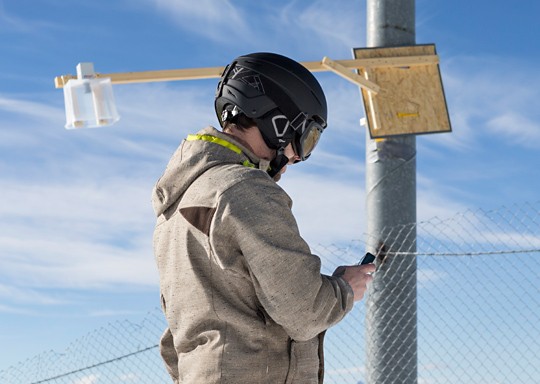
Mario Betschart checks the battery and the distance between the sensor and the floor on the Klein Matterhorn.
Sensors have been available at reasonable prices for some time now. However, there was no method for transmitting data. The LPN network, which now covers around 95 per cent of the Swiss population, makes it fun for people to try things out. When Betschart discussed the locations of sensors with the people from Swisscom in December, they felt the reception there would probably not be ideal right across the site. 'We then measured the ski resort as a whole and got a reception everywhere with LPN. This is significantly better than even Swisscom had suggested. We were surprised, and it means there are practically no restrictions on how the application can be used.'
It is also simple enough to construct an Internet of Things on a pilot trial basis using roof battens and clamping sets. Zermatt Bergbahnen will make a decision in early summer regarding whether to carry on using the Snowcast.io IoT solution. Mario Betschart is optimistic. The solution has already shown what it can do through the extreme weather conditions of recent months.
IoT Experience Center
The top floor of the Swisscom Shop in Badenerstrasse 18 in Zurich Stauffacher is entirely dedicated to the Low Power Network. SME and enterprise business customers can sign up for a tour. Interesting live demos and insights into numerous interesting applications await you. Interested? Please contact Roger Kaspar.

Newsletter
Would you like to regularly receive interesting articles and whitepapers on current ICT topics?
More on the topic

